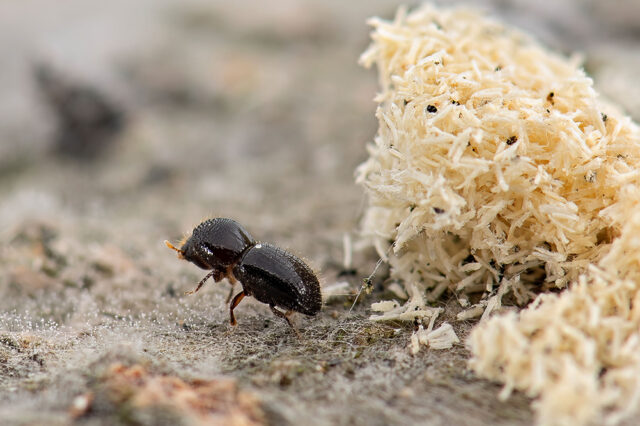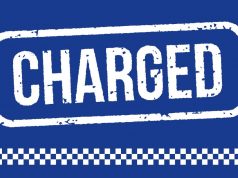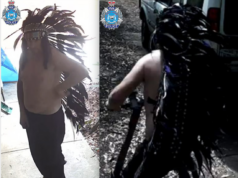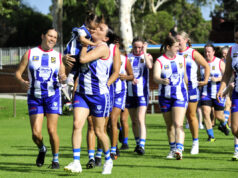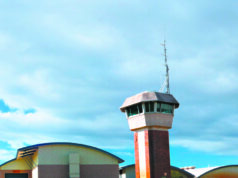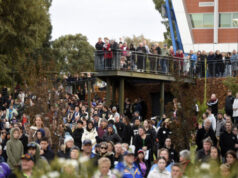The Department of Primary Industries and Regional Development (DPIRD) has confirmed with Examiner Newspapers that as of Friday October 4, 172 trees have been chopped down in the City of Canning as a result of polyphagous shot-hole borer (PSHB) infestation.
Recently, we reported that as of September 20, the City of Canning had to remove 46 street and park trees due to an infestation of polyphagous shot-hole borer.
The alarming new figure is another reminder to the community to remain vigilant and proactive in reporting any signs of infestation, as early detection is crucial to managing the spread of the PSHB.
According to the DPIRD, the most affected areas in Canning are Queens Park Reserve and Sheldrake Park in Willetton, located on opposite sides of the shire, which shows the widespread nature of the infestation.
“These areas contain the PSHB’s preferred host trees, such as box elder maples, coral trees and Robinia, which are typically associated with moderate to heavy infestation levels,” a spokesperson from the DPIRD said.
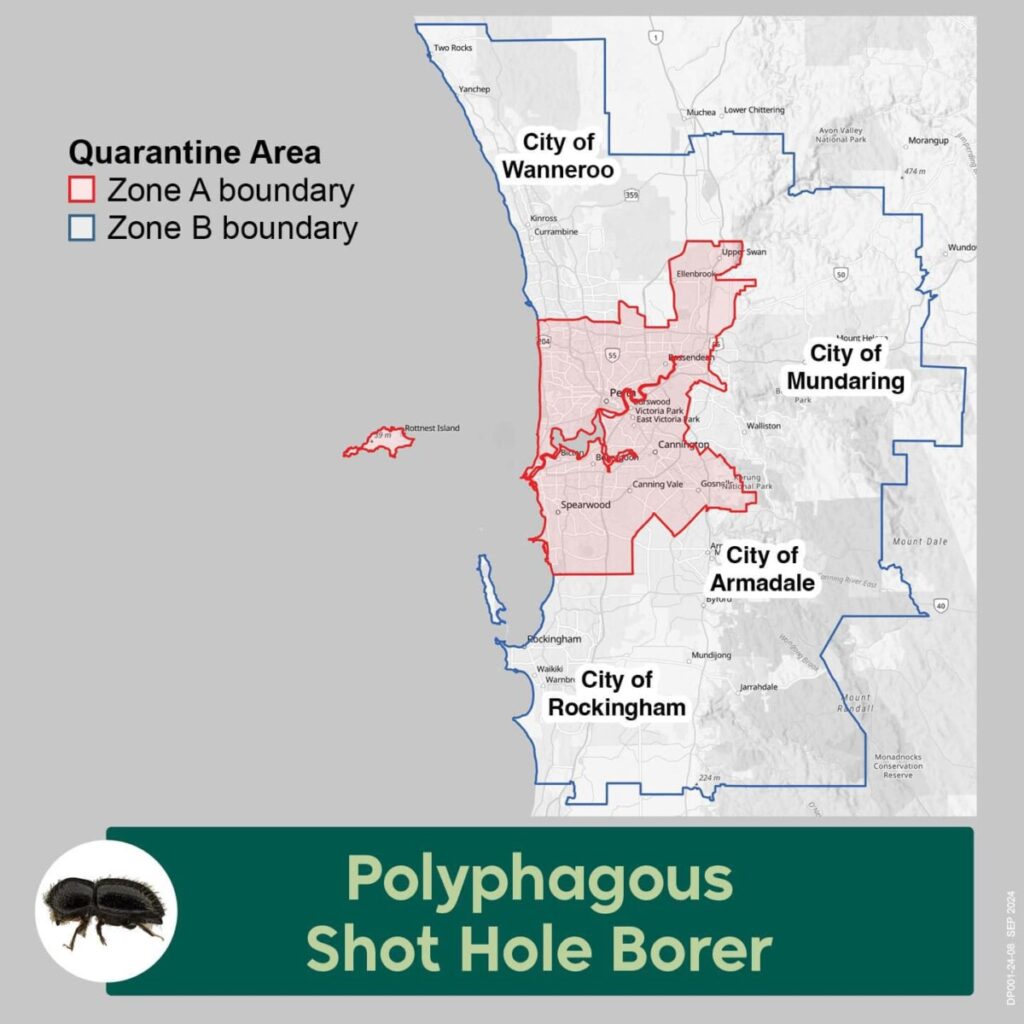
With 33 confirmed cases and an additional 12 trees displaying symptoms of PSHB at Bicentennial Adenia Reserve in Riverton, that number of trees lost is set to grow, with removal work set to commence at the Reserve “as soon as practicable.”
“Through the combined efforts of surveillance, trapping, tree management and quarantine restrictions, together with public information, DPIRD is ensuring every effort is being made to eradicate PSHB as part of the nationally coordinated and funded campaign,” the spokesperson said.
“We thank residents, local governments and communities for their ongoing support and vigilance.”
The majority of the costs associated with the removal of trees affected by the PSHB infestation are covered by the ongoing expenses of the $44 million biosecurity response from the State Government, although the exact expenditures for individual local councils are unknown.
“Works are undertaken at the cost of the biosecurity response, although councils may choose to undertake works at their own cost,” the spokesperson explained.
With local communities set to share a $7.2 million tree recovery package, this funding is expected to support the planting of up to three trees for every one lost to PSHB infestation on public lands.
State Environment Minister Reece Whitby believes his government is taking adequate measures to address tree canopy loss.
“[We have] invested significantly in Perth’s urban canopy by providing grants for local governments to plant trees and working with stakeholders to develop an Urban Greening Strategy,” he said.
“We want to build on that work by supporting local governments and residential landholders to recover any trees that are lost as a result of our attempts to manage PSHB in WA.”
“We know planting trees is one of the simplest things Western Australians can do to help fight climate change. That’s why it’s important we replace trees that will be lost to PSHB infestation.
In the City of Gosnells, 26 trees have been removed to date, with Thornlie River Park along the Canning River being the most affected.
Signs of PSHB infestation include multiple entrance holes in the trunk or branches about the size of a ballpoint pen tip, frass or sawdust, dieback and dark tunnel galleries
Anyone who suspects damage caused by the polyphagous shot-hole borer is encouraged to report their findings via the DPIRD MyPestGuide app or by calling 9368 3080 or emailing padis@dpird.wa.gov.au.


